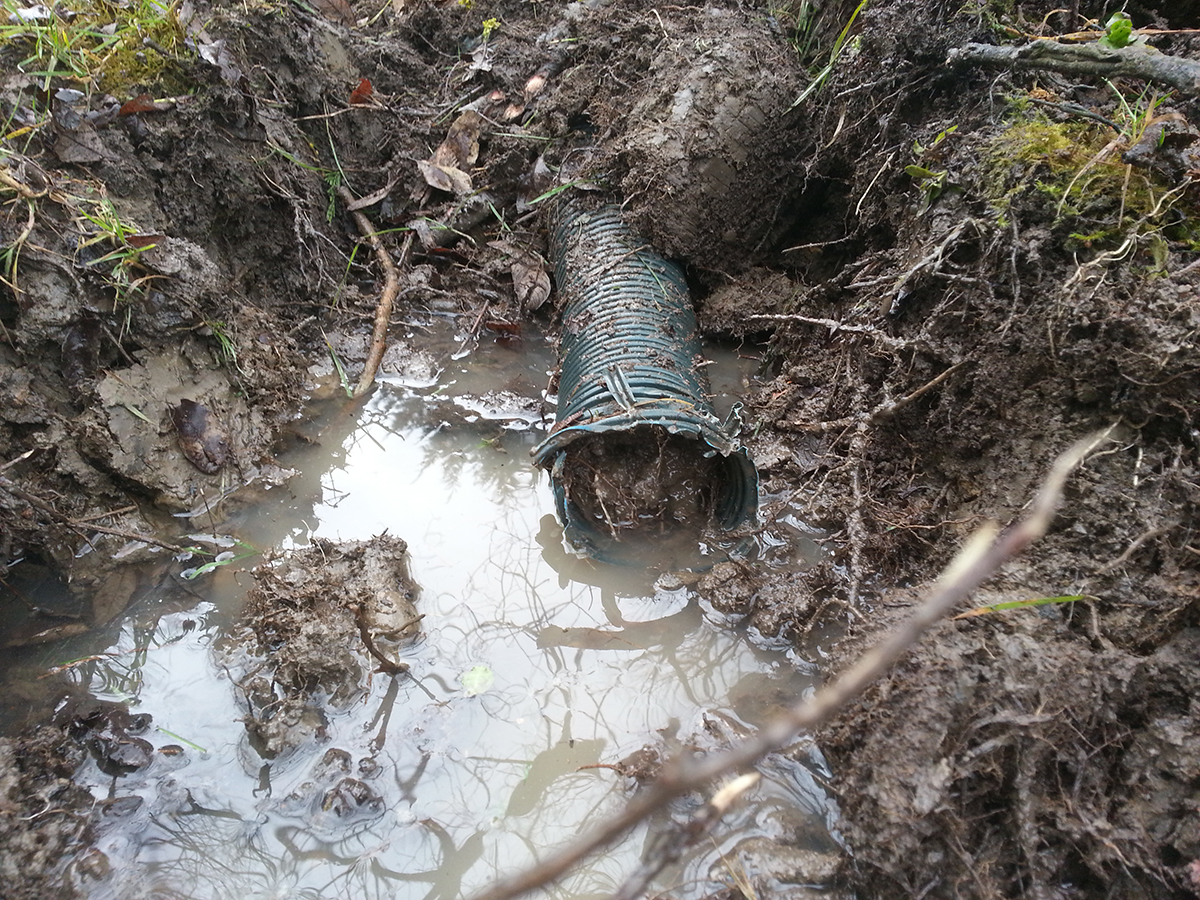When faced with an area of waterlogged garden the solution put forward is always to put a drain in, as if digging a trench and putting in a length of perforated pipe will magically make the problem go away. If only life was so easy. If you are going to drain a piece of ground you need to address two questions, one you may not be able to answer, the second your are going to have to.
The first question is what is coursing the poor drainage, this can have answers and sometimes the reason is never actually found. It is still important to try and understand the circumstances behind the problem if an effective means of tackling it is to be found. Possible courses are:
- A buried layer stopping or slowing water percolating down to the water table
- High water table
- Springs
- A depression blocking the natural drainage
- A vertical structure blocking the natural drainage down a slope
The second is where you are going to drain the water to. This is the thing people always over look; they will happily stand looking at the problem debating the cause while never considering what they are going to do with the water once they have got it into a land drain. The bottom line is if you are going to drain an area you have to have somewhere to drain the water too. The problem is if the water isn’t draining away it may be because there is nowhere for it to drain to.
Before going any further down the drainage route the question needs to be asked; “is drainage the best solution?”
- Drainage is expensive and a big upheaval
- Persistently wet ground opens the opportunity to grow a range of different plants
- Drainage isn’t always practical
What’s involved?
If you are going to drain an area of garden you have to consider the practicalities, you are going to have to dig a trench – lots of trenches possibly –, bring in gravel and dispose of a lot of now unwanted subsoil. You also have to find somewhere to drain the unwanted water too, clean up all the mud (you are digging out very wet soil) and make good the area so that it once again looks like a garden and not the morning after the battle of the Somme!
Alternatively you could except the situation and fill the area with suitable plants. It is always far easier to plant with the prevailing conditions than try to fight them. Once you have accepted that this area is water logged and you are going to have to live with this it opens up whole new palette of plants to work with. Have a good look at the area and live with it for a while, at least a year, and seen how much sun it gets and when, is it wet all summer or just in winter, is there standing water in the area and how long for, all year, all winter or just when the weather is very wet. How big is the area affected and how does the area change over the course of the year. This way you can build up a mental map of the area so you appreciate which areas are going to be water logged just during winter, which all year round, which are going to be a bit wetter than ideal and which are going to be covered with standing water most of the year. These different areas provide you with the conditions needed to grow plants which would otherwise be very difficult otherwise. If you are prepared to spend a little time and patience you can turn what at first appeared a problem in to a real asset to you and your garden.
Finally not everywhere is going to be appropriate for this treatment and if the waterlogged area is your main area of garden then you are probably going to have to find a means of draining it; but for a small part of a garden, or even a large part of a very small garden, you may well be better seeing the possibilities of your garden and using them.



